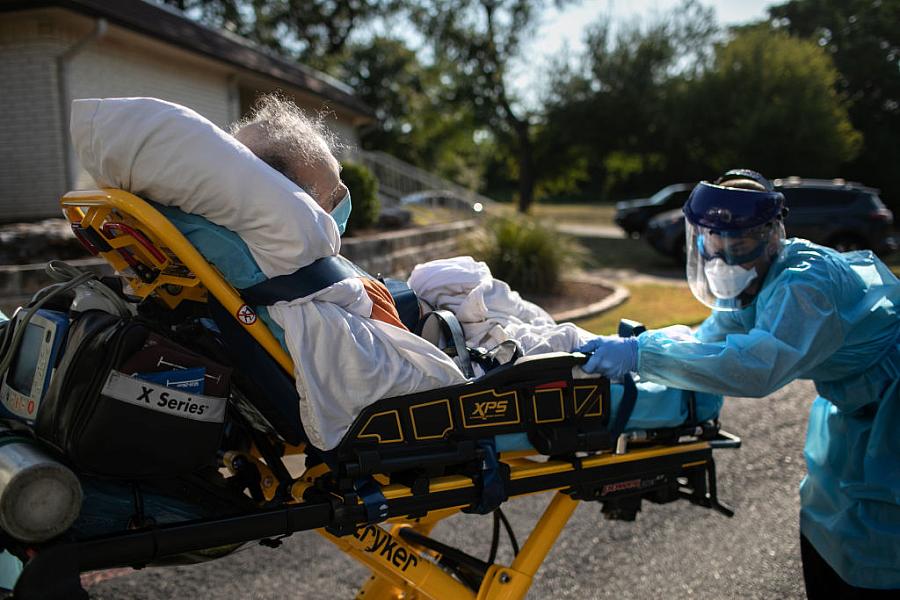Older Americans in nursing homes died at horrific rates from COVID. But not all homes were equal.

In early 2021, investigative reporter Letitia Stein went to her editors with an idea: She wanted to understand which nursing homes fared worse during the pandemic and whether that was connected to their finances.
The topic resonated personally with Stein, whose own elderly father was hospitalized early on during the pandemic and then required intensive care at home after he was discharged.
“I came to see that nursing homes are essential infrastructure in our society, where this aging demographic is already affecting so many,” said Stein, a 2021 National Fellow.
Her reporting culminated in a yearlong USA Today investigation that found one Midwest-based nursing home chain stood out for its high death rates, according to figures reported by the company to the federal government. In a recent Center for Heath Journalism webinar, Stein described how the project was powered by an original data analysis, and she also suggested strategies for how journalists can take a deeper look at nursing homes in their own communities.
Who fared better — or worse?
While many media outlets had reported on the devastating toll of COVID-19 on nursing home residents, the coverage felt episodic, Stein said, and left crucial questions unanswered.
Some academic studies linked overall community spread to what was happening in nursing homes: Areas with high community spread had higher deaths. But that logical correlation had a way of clouding the success or failure of individual facilities in protecting residents. Were there systemic issues involving a single chain or business model, she wondered?
To get at that question, Stein and her team, which included USA Today data reporter Jayme Fraser, created their own databases with the goal of looking at the information from every angle possible. They created about a dozen data sets analyzing factors such as cases, deaths, finances, and staffing.
Gathering the data wasn’t a simple task. A key challenge was figuring out the owners of nursing homes, especially those tied to a REIT, or a Real Estate Investment Trust. In some situations, REITs may have purchased the nursing home’s land and building and receive rent. Others may have a more complex business model in which they share in the facility’s operating profits.
The team looked at Securities and Exchange Commission (SEC) filings and earning reports for every major REIT that has a financial interest in nursing homes. They also combed LLC and property records to determine who owned the facilities, which was often “an onerous task,” she said.
Another helpful avenue relied on a federal government system that awarded bonus payments to facilities that did a good job keeping COVID out. What if they reversed engineered that process to find places that fared worse than expected?
Ultimately, the data trail led them to Trilogy Health Services, a large Midwest-based nursing home chain owned by a real estate venture. The chain’s self-reported data showed residents had died at twice the national average. Even after Trilogy revised the numbers, their rates still stood out as an outlier in states in which they operated, and among large chains.
A separate data set on nursing home staffing found the facilities had shrunk the amount of care delivered to residents in the years leading up to the pandemic, such as cutting certified nursing assistants, a position that generally helps residents with bedside care, feeding and bathing. They also looked at government inspection reports and found repeated violations for lapses in handwashing and masking.
At the same time, SEC filings gave the USA Today team another window into corporate-level financing. Skilled nursing accounted for a majority of what was a “quite profitable” overall business during the pandemic years, she said.
Combined, the data created the narrative backbone of the story.
“You can start to weave together a picture of what was happening in different places and who was told what,” she said. “You can connect dots.”
Telling your community’s story
For the project, Stein also had an engagement grant through the Center for Health Journalism’s National Fellowship, which encouraged her to engage with the affected population and overall community. To put as many faces as possible on the staggering numbers, she created a memorial wall. There, anyone could share the story of their personal nursing home loss.
For reporters interested in investigating these stories in their own community, the USA Today team has put together a facility report card database, which allows anyone to quickly look up nursing home nationwide. (Stein has since left USA Today to serve as health and science editor of The Philadelphia Inquirer.)
While finding ownership nationwide was daunting, Stein suggests starting simple: a facility’s web site might offer clues. Useful data sites include CMS COVID-19 nursing home data, LTCFocus, a project that compiles data on long term care facilities, and the federal government’s Nursing Home Compare site.
Reporters play an important watchdog role in holding these facilities accountable and honoring the lost lives, she said.
“These numbers — 140,000 dead —they’re just staggering, but they almost became numbers at some point during the pandemic,” she said. “And, they weren’t, they were people, they were names, they were stories.”
**
Watch the full presentation here:
